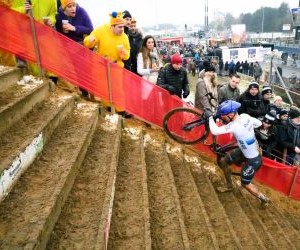Learn how to deal with punctures on long rides with prevention tips, repair techniques, and smart gear choices to keep rolling without stress.
WHAT ARE THE BEST CLIMBING STRATEGIES FOR AMATEURS?
Struggling on the climbs? You’re not alone. Climbing is often the toughest part of cycling for amateurs, but it’s also where gains are made. In this guide, you’ll discover smart, practical strategies to conquer hills with more confidence and less fatigue. From pacing and gearing to body position and mental tactics, these tips will help you become a stronger, more efficient climber—even if you’re new to the sport.

How to pace your climbs
The most common amateur mistake on climbs? Starting too hard. Pacing is everything on an ascent, especially long or steep ones. Blow up early, and you’ll struggle to recover. Get your pacing right, and you’ll pass others who burned their matches too soon.
Start slower than you think
Use your power meter or perceived exertion to begin at a conservative pace. If you're gasping in the first third, you're going too hard. Aim to stay aerobic, especially early on. You should be able to talk in short sentences for the first few minutes.
Break climbs into sections
Divide the climb mentally into chunks: base, middle, and top. Focus on steady rhythm in each. This helps prevent overwhelm and keeps your effort even. Slight surges are fine, but avoid spikes in power—they cost energy you won’t get back.
Use a climbing pace ~80–90% of FTP or max sustainable heart rate
Keep cadence around 75–90 RPM to avoid muscle fatigue
Take short, deep breaths to stay oxygenated
Don’t chase others—ride your own pace
Use landmarks to reset mentally and pace progress
Gear choice and body position
Your gear ratio and position on the bike can make or break your climb. Amateur cyclists often underestimate how much easier hills get when you're in the right gear and sitting properly.
Choose climbing-friendly gearing
Opt for a compact crankset (e.g., 50/34) and a wide-range cassette (e.g., 11-32 or 11-34). This gives you lower gears, allowing a higher cadence without burning your legs. Shift early—before the steep pitch hits—to avoid mashing or stalling.
Stay seated—mostly
Seated climbing is more energy-efficient. Keep your hands on the hoods, elbows slightly bent, and upper body relaxed. Rock your bike as little as possible. Stand only on very steep sections, to stretch or accelerate briefly.
Shift your weight properly
On steep climbs, slide slightly forward on your saddle and lower your torso. This helps maintain traction on the rear wheel and improves your leverage over the pedals. Avoid pulling up hard on the bars—it wastes energy.
Install a climbing gear ratio for your fitness level
Shift gears before you feel strain
Keep upper body still to save energy
Alternate seated and standing on very steep climbs only
Use a bike fit to optimize climbing position
Mental strategies and endurance tips
Climbing is as much mental as it is physical. For amateur cyclists, building mental toughness and a few endurance hacks can go a long way in making climbs feel less daunting and more doable.
Focus on cadence and rhythm
Pick a comfortable cadence and zone out in the rhythm. Listening to your breath or music can help you get into a flow state. This distracts from discomfort and keeps you from overthinking how much longer is left.
Use positive self-talk
Climbs hurt—but how you talk to yourself matters. Instead of thinking, “This sucks,” shift to, “I’m getting stronger with every pedal stroke.” Visualization also helps: picture yourself flying over the top, light and strong.
Fuel properly for long climbs
Before a long ride, eat a carb-rich meal 2–3 hours prior. During the ride, take in 30–60g of carbs per hour through gels, bars, or drinks. Bonking on a climb is brutal—fuel smart to avoid it. Sip water consistently, especially on hot days.
Use mantras like “light and strong” or “smooth and steady”
Celebrate small milestones mid-climb
Train on hills regularly to reduce fear factor
Ride with a partner for pacing and morale
Log your climbs to track progress and build confidence
YOU MAY ALSO BE INTERESTED






